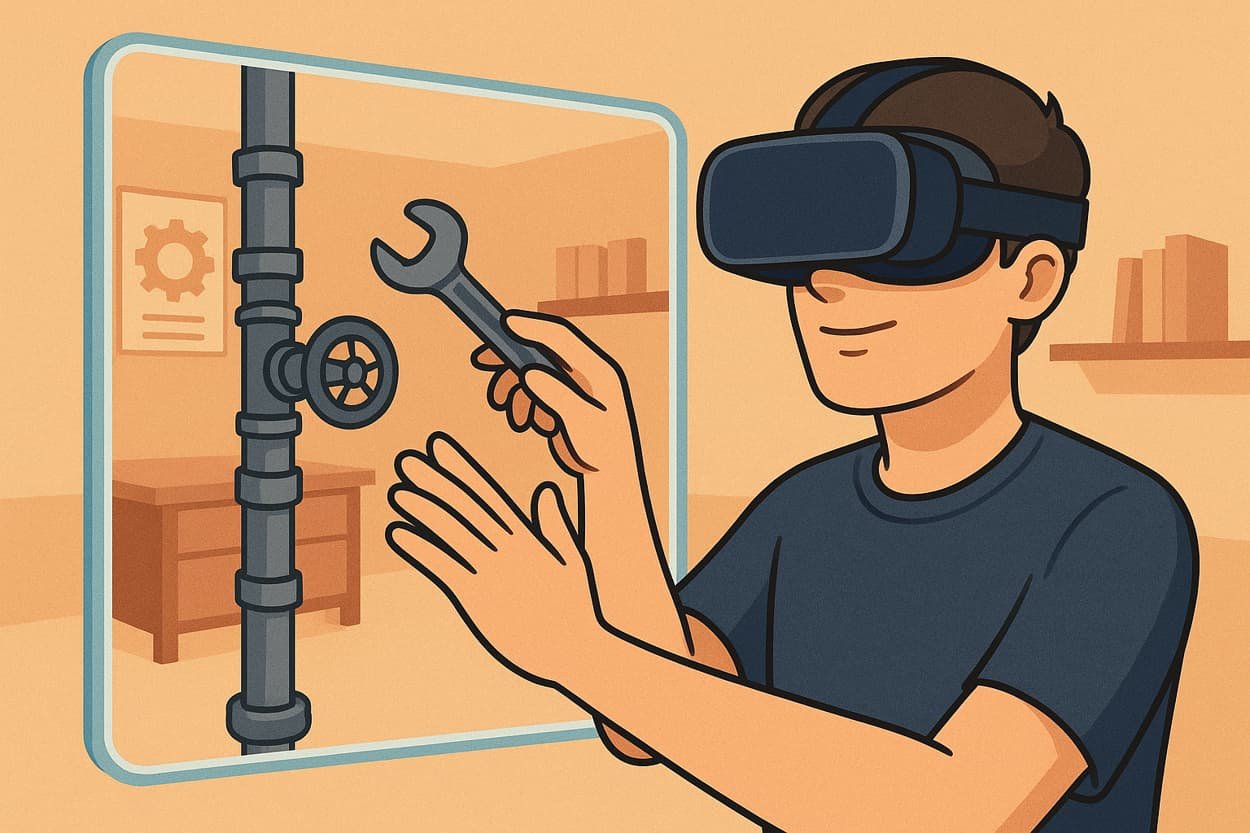Virtual Reality (VR) is revolutionizing career and technical training by offering hands-on learning experiences in a risk-free environment. Many industries, including healthcare, engineering, and manufacturing, are integrating VR simulations to enhance skill development and workforce readiness.
From surgical procedures to automotive repair, VR provides trainees with an interactive, immersive way to practice complex tasks before applying them in real-world scenarios. But how effective are VR simulations in career and technical training, and what industries are benefiting the most?
Why Use VR for Career and Technical Training?
VR simulations provide several advantages that enhance training effectiveness and knowledge retention:
- Hands-On Learning Without Risk: Trainees can practice high-risk tasks, such as electrical repairs or medical procedures, without real-world dangers.
- Cost-Effective Training: Companies save money by reducing the need for physical equipment and resources.
- Realistic Work Scenarios: VR replicates real-life conditions, allowing trainees to experience job-related challenges in a controlled environment.
- Improved Engagement and Retention: Interactive simulations enhance understanding and help trainees retain information longer.
- Adaptability for Various Skill Levels: VR training modules can be customized to suit beginners and advanced learners alike.
These benefits make VR a game-changer in technical education and career development.
How Different Industries Use VR for Training
VR is being implemented across various fields, improving both education and workforce development. Here are some key industries leveraging VR:
- Healthcare: Medical students and professionals use VR for surgical training, patient diagnosis simulations, and emergency response exercises.
- Manufacturing: Employees receive hands-on instruction in machine operation, maintenance, and assembly processes.
- Aerospace and Aviation: Pilots and maintenance crews train in virtual cockpits and aircraft repair environments.
- Construction: Workers practice safety procedures, blueprint analysis, and heavy machinery operations in VR environments.
- Automotive Industry: Mechanics use VR to diagnose and repair vehicles before handling real components.
These industries highlight the growing adoption of VR as a practical training tool.
Challenges of Implementing VR in Training Programs
Despite its benefits, VR training comes with some challenges that must be addressed:
- High Initial Costs: VR hardware and content development require an upfront investment, though costs are decreasing over time.
- Technical Learning Curve: Trainers and trainees may need time to adapt to VR technology.
- Hardware Limitations: Not all organizations have access to high-performance VR systems.
- Need for Custom Content: Industry-specific training modules must be designed for maximum effectiveness.
By overcoming these barriers, businesses and educators can fully utilize VR’s potential in training programs.
The Future of VR Training Programs
As VR technology evolves, its applications in career and technical training are expanding. Key future trends include:
- AI-Driven Personalization: VR systems that adapt to individual learning styles and performance levels.
- Remote VR Training: Cloud-based VR solutions that allow training from anywhere.
- Haptic Feedback Enhancements: Advanced VR gloves and suits that provide realistic touch sensations.
- VR-Based Certification Programs: Virtual exams and skill assessments that validate technical competencies.
These innovations will make VR an even more valuable tool for workforce training in the coming years.
Recommended Resources
For further exploration of VR in career and technical training, check out these resources:
- Forbes – How VR is Changing Workforce Training
- CNBC – VR Training in Various Industries
- EdTech Magazine – VR Simulations in Education
- Immersive Learning News – VR Training Trends
These articles and reports provide in-depth insights into the growing field of VR-based career training.
Frequently Asked Questions
Here are some common questions about using VR in career and technical training:
- Is VR training more effective than traditional methods? Studies show that VR improves retention rates and engagement compared to conventional learning.
- What type of equipment is needed for VR training? It depends on the program, but most require a VR headset, controllers, and compatible software.
- Can VR be used for soft skills training? Yes, VR is also used for leadership development, customer service simulations, and workplace conflict resolution.
- Is VR training expensive for businesses? Initial costs can be high, but long-term savings on materials and travel expenses often make it a cost-effective solution.
